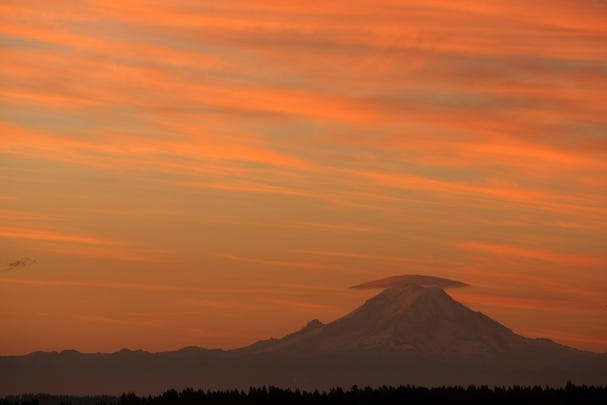Get ready, Washington: the days are about to feel much shorter.
As fall sets in, the Pacific Northwest is already losing sunlight, and when Daylight Saving Time ends in early November, evenings will grow darker even more quickly.
Much of the state has already lost more than an hour of daylight this September alone, and the month isn’t even two-thirds over. Since the Summer Solstice — the longest day of the year —daylight has shrunk by more than 3.5 hours.
So how short will the days get this winter?
When does Daylight Saving Time end?
Daylight Saving Time ends on Sunday, Nov. 2, 2025, at 2 a.m., when clocks fall back one hour to standard time.
How much sunlight will Washington get this fall and winter?
Even by the end of September, the state will lose roughly an additional 40 minutes, bringing total daylight to about 11 hours and 40 minutes for much of Washington, according to timeanddate.com
Note: Not all sunrise and sunset times are the same across Washington. The times listed here are specific to Seattle, though similar trends are expected across much of the state. Variations will occur depending on latitude and local geography, but the overall loss of daylight and shift in morning and evening light will be broadly similar.
Sept. 1 → Sept. 30:
-
Sunrise: 6:28 a.m. → 7:07 a.m. (39 minutes later)
-
Sunset: 7:48 p.m. → 6:49 p.m. (59 minutes earlier)
-
Total daylight: 13h 20m → 11h 42m (1 hour, 38 minutes lost)
Oct. 1 → Oct. 31:
-
Sunrise: 7:09 a.m. → 7:52 a.m. (43 minutes later)
-
Sunset: 6:47 p.m. → 5:52 p.m. (55 minutes earlier)
-
Total daylight: 11 hours 38 minutes → 9 hours 59 minutes (1 hour 39 minutes lost)
Nov. 1 → Nov. 30 (Daylight Saving Time ends Nov. 2):
-
Sunrise: 7:54 a.m. → 7:36 a.m.*
-
Sunset: 5:51 p.m. → 4:20 p.m.*
-
Total daylight: 9 hours 56 minutes → 8 hours 44 minutes (1 hour 12 minutes lost)
*Clock times shift on Nov. 2 due to the end of DST. The decrease in daylight is natural, though times appear to “jump.”
Dec. 1 → Dec. 21* (Winter Solstice):
-
Sunrise: 7:37 a.m. → 7:55 a.m. (18 minutes later)
-
Sunset: 4:19 p.m. → 4:20 p.m. (1 minute later)
-
Total daylight: 8 hours 42 minutes → 8 hours 25 minutes (17 minutes lost)
After the winter solstice, daylight hours increase again as days grow longer.
When is the earliest sunset this year?
The earliest sunset of the year will come between Dec. 7 and Dec. 13, when the sun dips below the horizon at 4:17 p.m. each evening before beginning to set later again.
When is the latest sunrise this year?
The latest sunrise will come a couple of weeks later, between Dec. 27 and Jan. 5, when the sun won’t rise until 7:57 a.m. before gradually starting the day earlier.
When is the shortest day of the year?
The shortest day of the year falls on Dec. 21, when total daylight in Seattle drops to just 8 hours and 25 minutes.
Why does Daylight Saving Time exist?
Daylight Saving Time was first widely adopted in the United States during World War I as a way to save fuel and energy by making better use of daylight hours. Today, the practice is meant to shift more usable daylight into the evening, though many critics argue the benefits are outdated. Twice a year, most states still change clocks — moving forward in spring and back in fall — while a few, like Arizona and Hawaii, opt out entirely.
Stay informed. Subscribe to receive texts about weather.
Brandi D. Addison covers weather across the United States as the Weather Connect Reporter for the USA TODAY Network. She can be reached at baddison@gannett.com.
This article originally appeared on Kitsap Sun: How much sunlight does Washington lose? Daylight Saving ends Nov. 3









